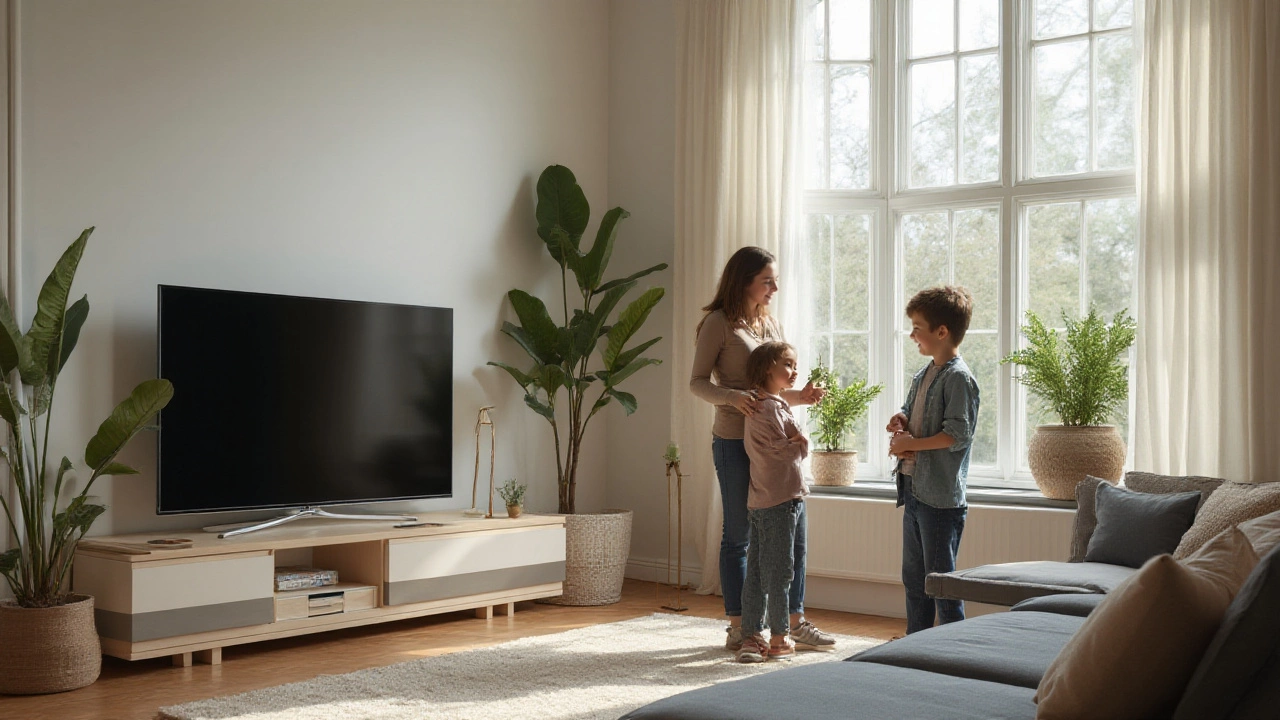TV Stand Width: How to Pick the Right Size for Your Living Room
First thing’s first – grab a tape measure and find out how wide your TV actually is. Most flat‑screen specs list the diagonal, not the width, so check the product sheet or search the model online for the exact number in inches or centimeters. That number is your starting point.
Why the Stand Should Be Wider Than the TV
If the stand is the exact same width as the TV, the edges will look cramped and you won’t have room for speakers, gaming consoles, or décor. Aim for a stand that’s at least 2‑4 inches (5‑10 cm) wider on each side. That gives the TV a little breathing room and makes the whole setup feel balanced.
For a 55‑inch TV, which is usually about 48 inches wide, a stand between 52 and 56 inches works well. A 65‑inch TV (roughly 57 inches wide) pairs nicely with a 62‑to‑66‑inch stand. These simple gaps keep everything looking tidy without wasting floor space.
How to Fit Your Room and Your Lifestyle
Measure the wall space first. Leave at least a few inches on either side of the stand so you can move chairs or walk around comfortably. If your room is narrow, a narrower stand that still meets the width rule will prevent the space from feeling squeezed.
Think about what else lives on the stand. A soundbar needs room, as do cable boxes and game consoles. Add up the depths of these items and choose a stand whose shelf depth is at least 2 inches (5 cm) deeper than the deepest piece. This avoids a wobly look and makes it easier to reach ports.
Style matters, too. If you like a clean, floating look, pick a stand with a thin profile and simple legs. If you prefer storage, a wider stand with cabinets hides cords and keeps the room tidy. Both options work as long as the width rule stays intact.
Don’t forget the height. The ideal eye‑level for most viewers is when the TV’s midpoint is about 42 inches from the floor. If your stand is too low, add a riser or consider a wall‑mount. If it’s too high, a lower stand or a slim console can bring the screen down to a comfortable spot.
Finally, test the look before you buy. Lay a piece of cardboard or a sheet of paper on the floor that matches your TV’s width, then step back. If the rectangle looks centered in the space and leaves room for side pieces, you’ve got a good size.
Choosing the right TV stand width doesn’t have to be a headache. Measure, add a little extra room, check depth, and think about how you’ll use the surface. Follow these steps and you’ll end up with a setup that looks good, works well, and feels just right for your home.
Best TV Stand Size for a 55 Inch TV: Guide to TV Stand Width & Placement
Wondering what width of TV stand suits your 55 inch TV? Get the facts, space-saving ideas, placement tips, and design hacks right here so your setup looks and feels just right.
More
